Archives
Flexible Water Connections and Insurance claims.
G’day, Sydney homeowners! It’s The Lone Drainer and Pronto here, back with a crucial message that could save you from unexpected financial setbacks. We’ve been plumbing superheroes for years, and today we’re here to talk about a growing issue – home insurance claims being denied due to a lack of periodic plumbing checks on braided stainless steel hoses.
You might be thinking, “What’s the fuss about insurance claims and plumbing checks?” Well, let us break it down for you.

In recent times, we’ve seen an alarming trend in the insurance industry, with some companies rejecting water damage claims because homeowners haven’t had licensed plumbers carry out periodic checks on these braided stainless steel hoses. It’s becoming a ticking time bomb for homeowners, and here’s why you should take it seriously:
- Insurance Denials: If your plumbing hasn’t been regularly inspected by a licensed plumber, your home insurance provider may use that as a reason to deny your claim in the event of water damage. That means you’ll be left to cover the expenses out of your own pocket.
- Preventable Disasters: Bursting hoses are a leading cause of water damage in homes. Periodic checks by licensed professionals can identify weak hoses before they burst, preventing potential disasters and costly repairs.
- Safety and Peace of Mind: Regular plumbing checks not only safeguard your home but also ensure your family’s safety. Water damage can lead to health hazards like mold and mildew, which pose risks to your loved ones. Knowing your plumbing is in good shape brings peace of mind.
So, what can you do to avoid these insurance claim rejections and protect your home and family?
- Schedule Regular Plumbing Checks: Ensure you have a licensed plumber inspect your flexible water connections periodically. This simple step can save you from potential financial losses.
- Document the Inspections: Keep records of these inspections, including the plumber’s report, to provide proof to your insurance company in case of a claim.
- Stay Proactive: Don’t wait until a disaster strikes. Regular maintenance and checks can prevent costly plumbing emergencies.
At The Lone Drainer and Pronto, we understand the importance of periodic plumbing checks. Our licensed professionals are ready to help you safeguard your home and keep your insurance claims secure. Don’t let your hard-earned money slip away due to a technicality – be proactive and ensure your plumbing is in top-notch condition. We’re here to assist you every step of the way!
Flexible Water Connections need maintenance
G’day again, folks! After our earlier post about the hidden danger of flexis, The Lone Drainer and Pronto are back, and this time we want to emphasize that we’ve got your back when it comes to all things plumbing in Sydney, especially those tricky flexible water connections.

We understand that it’s easy to overlook the maintenance of your plumbing components until it’s too late. That’s why we’re here to offer our expertise and services to ensure your plumbing system stays in tip-top shape.
Our experienced team is well-versed in dealing with flexible water connections and the potential risks they pose. Here’s why we should be your go-to plumbers in Sydney:
- Expert Inspection: We conduct thorough inspections of your plumbing system, including flexible water connections, to identify any signs of wear and tear. This proactive approach allows us to catch potential issues before they become catastrophic.
- Timely Repairs and Replacements: If we find any issues, we provide quick and reliable repair or replacement of the hoses. Our team only uses high-quality, durable components, ensuring that your plumbing is built to last.
- Preventive Maintenance: We offer regular maintenance services to keep your plumbing in top-notch condition, reducing the risk of unexpected plumbing emergencies.
- Emergency Services: We’re here 24/7 to handle any plumbing emergencies, so you can rest easy knowing that we’re just a phone call away when you need us the most.
When it comes to flexible water connections, don’t take any chances. Let the Lone Drainer and Pronto be your plumbing heroes, keeping your Sydney home safe from potential disasters.
Contact us today on 02 9664 4990 for all your plumbing needs, and remember – we’re always here to save the day!
Do deciduous tree roots block drains in winter?
Following on from our previous post, Do tree roots grow in sewer pipes during winter, deciduous trees that shed their leaves during the autumn, generally follow a similar pattern in terms of root growth during winter. However, there are a few additional factors to consider.
Deciduous trees undergo physiological changes in preparation for winter. As the days shorten and temperatures drop, they enter a period of dormancy. During this dormancy phase, metabolic activity slows down, including root growth. Deciduous trees allocate their energy resources towards survival mechanisms and protecting themselves from the cold rather than active growth.
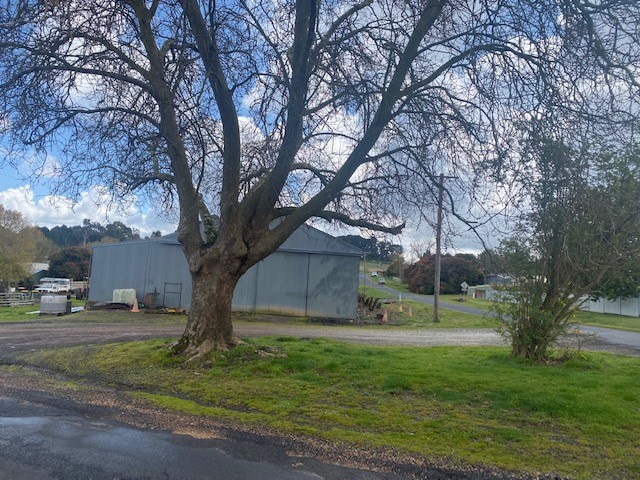
One significant difference with deciduous trees is that they shed their leaves in the autumn. This leaf drop allows the tree to conserve water and energy during winter when resources are limited. Without leaves, the tree doesn’t require as much water and nutrients, reducing the demand on the roots during the dormant period.
While root growth is generally slower or dormant during winter for deciduous trees, some root activity may still occur. Roots continue to function for basic water and nutrient uptake, albeit at a reduced rate compared to the active growing season. According to the arborists I’ve spoken with, the majority of root growth for deciduous trees resumes in the spring, coinciding with the growth of new leaves and the tree’s transition out of dormancy.
So, while there may be slight variations due to leaf drop and dormancy, the overall pattern of reduced root growth during winter applies to both deciduous and evergreen trees.
But remember, tree roots from deciduous trees will still block your drains and if they do, we can help!
World Plumbing Day 2023! Seven tips from your plumber
Saturday, March 11th 2023 is World Plumbing Day.
Plumbing is something we all take for granted. World Plumbing Day is the day to thank your plumber as you brush your teeth, flush your toilet and have a hot shower.
We don’t pay any attention to our plumbing unless, its not working. So spare a thought for your plumber who is on standby to help you. Why not put his name and telephone number into your mobile phone, Just in case!

Here are 7 easy plumbing tips to help around your home
- Know where your main water shut-off valve is: In case of a plumbing emergency (like a burst pipe), it’s important to know where your main shut-off valve is so you can turn off the water supply to your home. Bonus tip: Check that it works!
- Know where your water heater is. Check it periodically to see it’s not leaking. Learn how to turn it off and back on again. Bonus tip: Know if it’s heated by gas or electricity.
- Don’t pour grease or cooking oil down your drains: Grease and oil can build up in your pipes and cause blocked drains, it’s important to dispose of them properly. Use a drain strainer in the sink to catch scraps of food.
- Keep a sink plunger in your home. Know how to use it!
- Check for leaks: Regularly check for leaks under kitchen sinks and vanity basins. If you see signs of water, have your plumber repair them as soon as possible to prevent water damage. Bonus tip: Flexible water connections have become very common in Australian homes. Some Home insurance companies insist homeowners check them regularly and have your plumber change them periodically. When they burst, they cause a lot of water damage very fast. (See Tip #1)
- Don’t flush anything other than toilet paper: Flushing things like “flushable” wipes, sanitary products, or paper towels will block your drains.
- Leaking toilet cisterns can waste a lot of water. Know how to turn your cistern on and off until its fixed. Bonus tip: If you’re desperate, you can flush your toilet with a bucket of water.
Make sure you get a professional for complex plumbing problems. While some plumbing repairs can be undertaken by a competent home owner, more complex tasks like installing a new water heater or fixing a concealed leak should be left to a professional plumber to ensure they’re done properly.
When Wylie’s Baths needs a plumber
Wylie’s Baths in Coogee 2034 has kept within the Covid 19 guidelines to remain open for their patrons during the StayInside orders of 2021. They have over 50,000 swimmers a year and occasionally need help from their local friendly plumber.
The baths manager Courtney tells in 1 min 27sec what goes on behind the scenes to deliver a unique ocean pool where you can get a great cup of coffee and a sandwich.
Check it out!
Can Coronavirus be spread through wastewater pipes in a home or hospital?
Sydney April 15th 2020
“Staying connected” has become a part of our language lately.
Did you know we are all connected through the wastewater pipes in our homes?
Whether you live in a single level detached home or a multi-storey building, all our plumbing fittings drain into the same city sewer. That’s your shower, bath, basin, your WC, kitchen sink, washing machine, laundry tubs and floor drains.
A study showed the 2003 SARS virus spread through the plumbing system of a HongKong residential complex whose residents had 300 confirmed cases and 42 deaths- about 1/6th of the infections and fatalities on the entire island.
Our Australian Standards state “all plumbing fixtures must have a working trap or water seal”. That is, the S-bend at the outlet of the fixtures should have water sitting in them OR flowing through them.

Regularly we’re asked to investigate “a sewer smell” in a bathroom or laundry that is nothing more than a dry trap.
But, its allowing smells and bacteria to come from the wastewater and sewer pipes into your room.
Hypothetically, if an infected neighbour flushed their toilet and that wastewater entered a pipe you’re connected to, then bacteria could pass through a dry trap and enter your bathroom.
While person-to-person and surface-to-person is the most common means of spreading Coronavirus, I want you to be aware that any open or dry traps may allow contaminated droplets into your space.
So:
• Do not ignore unexplained foul smells in bathrooms, kitchens or washing areas.
• Ensure all your sink traps and S-bends have water in them.
• Run water into all tubs and showers for a few seconds in the morning and evening, paying particular attention to floor drains in bathrooms and laundries.
• If the wastewater pipework from a toilet, sink or other household appliance appears to be disconnected or open, seal it immediately.
• If you find any crack or leak in pipework, seal it with strong tape.
• Encourage your facilities managers to monitor the wastewater system performance of your building, looking out for things such as drainage overflows or sewer smells.
If you have any questions about this, I invite you to call me.
Why have a Drainoscopy?
Today our post is simple.
A client from Bronte called. Since Christmas they’d had 3 blocked drains causing the downstairs toilet to overflow. Yuck!
The plumber they had been using didn’t have a drain camera and it was suggested that the pipes were broken.
We were able to clear the blockage quickly, then, give the pipes a Drainoscopy. That’s Lone Drainer speak for “put a specialised drain camera in the pipes and see what is really going on.”
The pipe was full of tree roots. That’s all!
We cut out the roots and had another look.
A simple Vaporooter treatment will keep the roots away. With a Guarantee!
Yes, the pipes are old clay pipes. You can see where the roots have been cut out. But, they work and will for some time to come.
The best way to find out is to see it for yourself.
More rain please
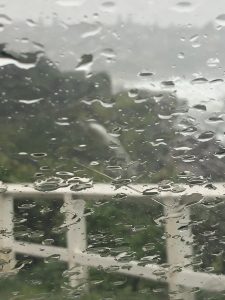
The rain has kept emergency plumbers on their toes.
If you need help with a flooding emergency, please call us.
Meanwhile, blow the rain to the west.
Our country cousins need it!
Storms bring blocked drains
The well-needed rain that arrived in Sydney over the last few days has created many blocked drains and grates that can easily be fixed.
Take the opportunity in between showers to check any pits or drains around your home that may be blocked by leaf debris or dirt. Put on your gardening or washing up gloves to clean them out; it may save you from some unexpected flooding.
The blocked drain shown here was covered by leaves and gum nuts blown off in the storm. It wasn’t able to cope with the deluge of water that caused the garage to flood.
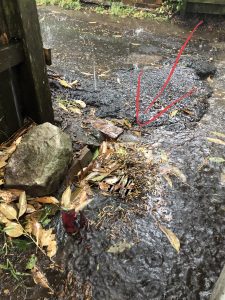
If your roof gutters are full and overflowing, it may be leaf debris and twigs or even a tennis ball from the summer back yard cricket series blocking the gutter outlets.
If you choose to put a ladder up to the roof gutters to have a look, please be very careful.
Take care climbing on your roof.
It may be very slippery!
The Lone Drainer’s Recipe #2
I scream, you scream, we’ll all scream for The Lone Drainer’s Passionfruit Ice Cream.
I, Dave Conroy, the master of the fast but excellent tasting recipe, have developed a speedy, easy, no-equipment-necessary recipe for fantastic ice cream. OK, it’s not super healthy, but it is home made, you know every single good ingredient (3) that’s in it because you put them there and its 100% natural.
Here is the recipe:
Go to the supermarket on the way home from work.
Buy 1 can of condensed milk and 1 carton of cream and 6 passionfruit.
Stir the cream and condensed milk together in a saucepan over a low heat.
Add the insides of the 6 passionfruit and let it sit off the heat while you open a beer, watch the news, have a shower or water the garden.
Then, (and this is the good bit) raid the grog cupboard, find some vodka. Any other liquor will do, but vodka is good because it has no flavor or colour. Gin will work just as well. Anything that won’t mask the flavor of the passionfruit. Add a good slug, around two tablespoons. Stir. Put the lot in a plastic container and stick it in the freezer. It’ll be ready in about an hour.

This wondrous creation has been tried and tested in the The Lone Drainer’s Test Kitchen many times. There is science at the back of it too. The alcohol in the vodka stops the ice cream forming crystals, which make for an unpleasant texture. Alcohol just won’t freeze in a normal domestic freezer. So it keeps the ice cream creamy. Ipso facto, you don’t have to do all that churning with machines and gadgets and what not.
We’ve tried it with whisky and two espresso coffees instead of the passionfruit and that came out tops too. It’s just not a fussy recipe. But it won’t work without the grog. Trust me. I’m a plumber. And I don’t like to waste good alcohol.
Here is a picture of two thirds of my last batch of passionfruit ice cream. I did want to photograph it BEFORE eating it, but just couldn’t resist. Evidence of how good it is.
Read our blog. Cook my food. Admire our plumbing.
My bathroom is flooding!
There are busted pipes in peoples homes every day. Knowing where to turn off your hot and cold water could be the difference between having a few wet items under the kitchen sink and having a total flood.
Yesterday morning we had an urgent phone call with a difference requesting an emergency plumber.
Allan, the homeowner knew exactly where to turn off the water to his home unit. A flexible connection under his bathroom vanity basin had burst.
Allan heard a “pop” then the sound of running water as it gushed out of his bathroom vanity basin onto the floor and out the door. Fortunately, shutting off the water quickly kept the damage to a minimum.
We were able to rescue Allan and his family pronto.
We replaced the ruptured hot flexible connection and changed the corroded looking cold connection also.
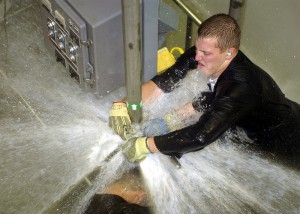
Urgent hot water help
Its really important to know a few simple things about your water heater.
I just had an emergency call from Emma, who returned from visiting the UK for Christmas. While she was away her water heater leaked through the kitchen cupboards, ruined the carpet throughout her home and flooded the property below.
The neighbour below had to force entry into her unit to turn off the water to protect his property.
Over the phone, Emma asked for help replacing her existing water heater.
I asked her to send a picture of the heater and I now know:
- There is no safe tray under the heater. Installing a safe tray to prevent future flooding should be considered.
- The water heater currently is an 80Ltr unit. The modern version is slightly larger and won’t fit in the cupboard. The cupboard may need to be dismantled to remove the existing and fit a new unit.
- A 50-litre heater may also be too big. (Please check the cupboard dimensions)
- The current water heater does not have a tempering valve fitted. Australian Standard states “A tempering valve to be a part of any new hot water installation”.
- There is a flexible connection between the Duo valve and the heater. Australian Standard states “Flexible connections do not comply”.
Does the cold water control valve that shuts off the water to your entire home work efficiently? It will need to, so that the Duo (control) valve the water heater can be worked on.
Take 3 tips.
- Know where your water heater is.
- Know how it turns off.
- Turn off the water and electricity or gas before you go on holidays.
If you’re not sure…ask me.
I don’t like cricket…I love it.
January 6th 2017 sees the rain tumbling down in Sydney’s eastern suburbs.
Day 4 of the New Years 3rd cricket test between Australia and Pakistan is delayed because of the heavy rain.
The gutters and drains around our home and office are full of leaf debris and could cause flooding for anyone who isn’t vigilant
Take a tip
- Check that your storm water drains and down pipes are free of debris before you go to the cricket.
Sewer overflow makes Coogee a “smelly place”
Coogee means “smelly place” and yesterday the beautiful beach, just 500 metres from our HQ, lived up to the name given it by indigenous Australians. The smell and subsequent beach closure was brought about by a Sydney Water blocked sewer main in nearby Dudley Street.
The overflowing sewer main spilled into the storm water system which then discharged into the surf just near the Coogee Surf Club. Randwick City Council closed the beach and drained the Ross Jones pool that sits adjacent to the surf club and the storm water discharge.
Sydney Water maintenance crews cleared a blockage in the sewer main that was caused by tree roots.
The tree root blockage and sewer overflow was completely preventable. The beach has been re-opened today.
Clipping from Sydney’s Daily Telegraph:
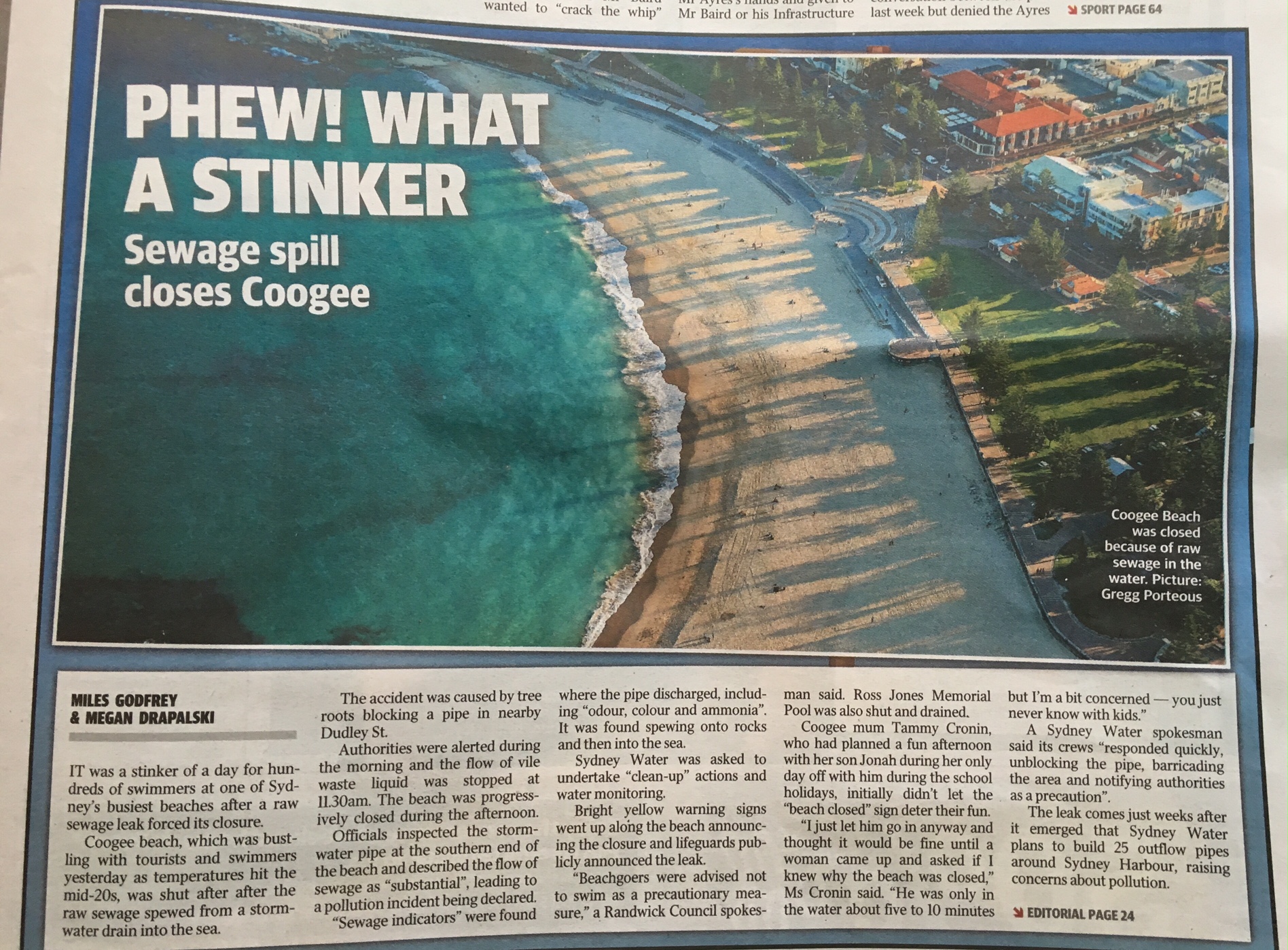
Why this plumber makes a regular blood donation

Its a simple thing to give blood. It doesn’t hurt at all! In fact it makes you feel really good…. and you get to help someone else.
Who knows, I may get to help you or your loved ones.
So what does that have to do with plumbing……
Well, only that all of your pipes need flushing from time to time. Even your personal pipes!
This is Furk! Having FUn at woRK.
Storm drains overflow
We had another storm blast through Sydney this afternoon.
We were safely on a boat in Rushcutters Bay fitting the gas cooker as the 60 knot wind blew through.
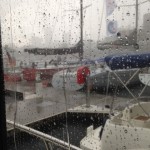
The rain poured down with hail stones thrown in. The storm flooded all the local street drains and in some places the gutters were up to 400mm deep in stormwater.
Please check the grates and drains around your home and ensure that they are clear and running freely. The storms come quickly and can create lots of damage fast.
If you need help…… Call us!
Ready for Sydney Storm Season
Sydney storm season got under way last night with a spectacular electric light show to compliment Ed Sheeran doing his stuff.

Make sure you take precautions around your home in case severe weather hits.
Severe weather, heavy rain and electrical storms can affect pumps and boosters throughout our network which can affect our water supply and sewer pumping stations.
Here are 5 tips to get you ready:
1. Candle and matches – Have them handy.
2. Know where and how to turn off your water supply.
3. Have 3 days supply of fresh water in containers. Approximately 10 litres per person.
4. Check that your storm water grates and drains are clear of leaf debris and dirt.
5. Ensure your storm water down pipes are clear and not connected to the sewer.
If you’re not sure, Ask us!
Plumbing Emergency – Can’t turn the water off!
When you have a plumbing emergency…
On Thursday night a client rang after 9.00pm to say her basin tap that had been leaking for a few weeks was now gushing water… and the water meter at the front of the house wouldn’t shut off!

We were able to rescue her family quite quickly. However it was an expensive process.
What’s the take away from that? If your taps don’t feel right, please don’t ignore it. Call a plumber and schedule a repair. And if your water meter wont shut off, it sounds like a job for The Lone Drainer and Pronto.
Get your personal pipes checked…. I did!
November is Men’s Health Month and my reminder came in the mail. “Its time to get your pipes checked again” said the friendly letter from my Colorectal surgeon. It spelt out the process, the fasting, the preparation, the costs, the procedure on the day, what to expect afterwards, the discomfort but most of all…….. the benefit!
So on Sunday I began the preparation for a colonoscopy on Monday. After a healthy and hearty breakfast on Sunday morning it was a time of fasting. No food! Then, from early afternoon into the evening I had to take not 1, not 2, but 3 doses of fairly unpleasant medicine that would clean my internal pipes so the surgeon could put his camera through them.
Now all this makes sense to a 54 year old father of 3 healthy and happy sons whose father, after being diagnosed with Prostate cancer passed away a few years ago.
So, I hear you ask, why is your plumber telling you this?
If your body is a temple as mine is, and your home is your castle, then it’s appropriate to get your pipes checked, especially if your castle has a history of problems or blockages in your sewer pipes.
There are many parallels between a Colonoscopy and a Drainoscopy.
To get a Drainoscopy is easy!
We clear your pipes and then put a specialized drain camera through the pipes to find out what is actually going on in there. Then we take the vision and put it on our YouTube channel with a description of what is going on in the pipes. You can see it, you can share it, you can get a second opinion, you can evaluate the information and understand exactly what is going on underground or in your pipes.
Yes, it is a little uncomfortable. But now I know that after Dr “L” has treated 2 areas of interest and checked my prostate, my pipes are in good condition. I’ve seen the pictures. And at the appropriate time, he will send me a reminder for my next Drainoscopy er Colonoscopy.
So to end on a high note watch this fun YouTube clip.
Water saving tips for Spring
Now we are really into spring and the gardens are blooming, after our long weekend heatwave, the lawn needs to be watered.
A dripping tap can waste up to anywhere between 30 and 200 litres of water a day. That’s over 70,000 litres a year.
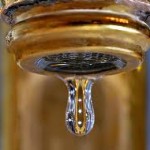
So here are a couple of simple water saving tips to get you through spring and the long hot summer ahead.
Ensure all household and garden taps are always turned off tightly so they don’t drip. Don’t force taps as you can damage them and actually cause leaks.
Develop a regular routine of checking all indoor and outdoor taps, washers and pipes for leaks, cracks and breaks.
Check all your household appliances for water leaks. Learn how to repair leaking taps; a new washer is inexpensive and easily available at your local hardware store.
If in doubt call us for some over the phone guidance on 02 9664 4990.
Broncos and Cowboys Long Weekend
The October long weekend brings a sporting feast to Sydney. NRL fans will descend on our city for the Grand Final between the Brisbane Broncos and the North Queensland Cowboys.
The Lone Drainer and Pronto loves cowboys and horses. My heart says Cowboys but the head says Broncos.
The Epsom Handicap will be run at Royal Randwick. I’m tipping Sadlers Lake with the great Jim Cassidy riding. Whilst in Melbourne, the AFL sees the Hawks Hawthorn up against the Eagles from West Coast. Go Eagles!
What ever you’re doing, have fun! And if you have a plumbing emergency… you can call us!

5% of blocked drains are fixed with an electric eel
Less than 5% of blocked drains in Sydney are cleared by an electric eel. The rest are cleared and cleaned by high-pressure water drain cleaners that operate by pumping clean water at very high pressure into the sewer pipe through a series of hoses to clear the blockage.
Over 85% of blocked drains are caused by tree roots and we can show you how to Stop Tree Roots in Drains. Watch this short 2 minute YouTube video to see how we use the “Rattlesnake” drain cleaner to clear your blockage!
Get your pipes checked…. I did!
November is Men’s Health Month and my reminder came in the mail:
“It’s time to get your pipes checked again,” said the friendly letter from my Colorectal surgeon. It spelled out the process; the fasting, the preparation, the costs, the procedure on the day, what to expect afterwards, the discomfort but most of all…….. the benefit!
So on Sunday, I began the preparation for a colonoscopy on Monday. After a healthy and hearty breakfast on Sunday morning, it was a time of fasting. No food! Then, from early afternoon into the evening I had to take not 1, not 2, but 3 doses of fairly unpleasant medicine that would clean my internal pipes so the surgeon could put his camera through them.
Now all this makes sense to a 54 year old male and father of 3 healthy and happy sons, whose father after being diagnosed with Prostate cancer passed away a few years ago.
So, I hear you ask, why is your plumber telling you this? If your body is a temple and mine is, and your home is your castle then it’s appropriate to get your pipes checked, especially if your castle has a history of problems or blockages in your sewer pipes.
There are many parallels between a Colonoscopy and a Drainoscopy.
To get a Drainoscopy is easy!
We clear your pipes and then put a specialized drain camera through the pipes to find out what is actually going on in there. Then we take the vision and put it on our YouTube channel with a description of what is going on in the pipes. You can see it, you can share it, you can get a second opinion, you can evaluate the information and understand exactly what is going on underground or in your pipes.
Yes, it is a little uncomfortable. But now I know that after Dr “L” has treated 2 areas of interest and checked my prostate, my pipes are in good condition. I’ve seen the pictures. And at the appropriate time, he will send me a reminder for my next Drainoscopy er… Colonoscopy.
So to end on a high note watch this fun YouTube clip.
Happy Plumbers + Great Service = Happy Clients
We have a great team of plumbers here at The Lone Drainer and Pronto! They are good at their job. They Love their work. We call it “Furk”! Having FUn..at..woRK
On Monday afternoon, 27th October 2014, I got the following email:
Hi Dave,
Thank you so very much for taking my phone call early this morning and organising Chris and Leigh to come to my house so quickly.
Chris and Leigh arrived, knocked on my door, introduced themselves with smiles and put me at ease that my sewerage problems would be fixed.
Such a relief. I could not have had nicer people to arrive on my door step. Both well mannered and very pleasant people to talk to.
I also had a problem with my kitchen sink tap. Unfortunately I had to leave Chris at the kitchen sink as I had to go to work. He did a good job and I now have a brand new tap looking at me! Both men were very efficient.
Again, thank you for being so prompt and getting the job on its way.
Kind regards,
Julie B. Randwick NSW

Leigh and Chris with Plunger

 You might not think about them often, but those little hoses are like ticking time bombs waiting to go off. They’re commonly used in modern plumbing, connecting your taps, toilets, and appliances to the water supply. Over time, they can become a major source of plumbing disasters.
You might not think about them often, but those little hoses are like ticking time bombs waiting to go off. They’re commonly used in modern plumbing, connecting your taps, toilets, and appliances to the water supply. Over time, they can become a major source of plumbing disasters.